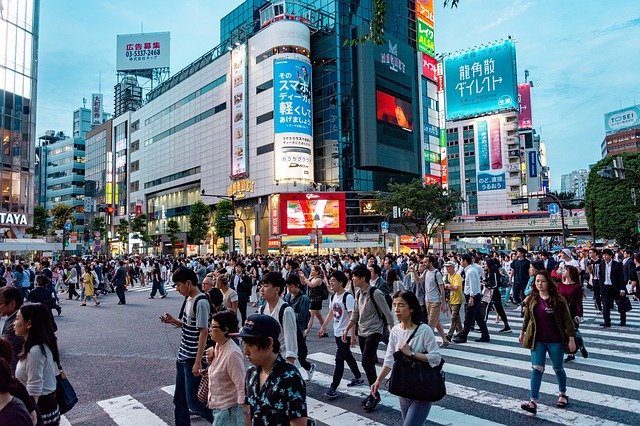Living in Japan Doesn’t Have to Be Expensive

Japan is often touted as an expensive place to live. With a high quality of living, national health system, vibrant cultural scene, admirable levels of education and safety — it’s not hard to understand some of the reasons why people want to call it home. These desirable factors come at a cost, though.
The nation’s capital was recently revealed as the world’s third most-expensive city to be an expat in, according to the Mercer Cost of Living Survey 2020. It ranked just below Hong Kong and Ashgabat. But don’t be fooled by big claims that living in Japan, or even Tokyo, will break the bank. Like any location around the globe, there are ways to cut down on living expenses without compromising your lifestyle.
The impact of COVID-19 on daily lives and the economy has also changed the way we spend. Many have had their livelihoods affected, with the tourism industry, entertainment and nightlife all but decimated; job losses due to the pandemic have led to many feeling the pinch. Saving money now is perhaps more important than ever.
Looking for ways to live in Japan on a budget is about being savvy with where you spend your cash. Here are some tried and tested tips and tricks to cut back on your expenses and get those yen working for themselves.
Figure out food shopping
The price of food and everyday items varies hugely from shop to shop. Tokyu Stores might be right opposite (or even in) your station, but that is a convenience you pay for with steep price points. Similarly, the luxury of choice afforded by fancy stores like Precce and the admittedly more economical Aeon Style means paying handsomely for the privilege.
Buying the basics at cheaper chains can result in saving a pretty penny on your purchases. Popular budget supermarkets include Gyomu Super and Hanamasa; these may not be the sleek supermarkets of your dreams, but they’re relatively cheap and actually used by small restaurants to keep their stocks replenished. Because of this they sell international basics such as pasta and bread for a snip, as well as ingredients for Mexican dishes and curries — often in bulk.
But there’s a catch. Gyomu and its ilk often carry more expensive fruits and vegetables than the larger chain stores, and this is where shopping around comes into play. Basic items — your onions, carrots and potatoes — can be picked up cheaply in places such as Life and Aeon.
Don’t overlook local yaoya (greengrocer) joints either. These mainstays of shōtengai (shopping streets) and suburban neighborhoods are a top spot for picking up fresh produce for low prices; since they specialize in fruit and vegetables you may find things that your supermarket is lacking, plus you’ll be supporting a small independent business. Be warned: Much like turnip prices in “Animal Crossing,” real life fruit and veg prices fluctuate on the daily in Japan. Around New Year’s and other seasonal breaks price gouging does occur, so it’s wise to plan ahead.
Take full advantage of evening reductions at supermarkets when sushi or okazu (side dishes) are marked down, sometimes at half the price or more. Work out the time your local supermarket starts reducing their freshly made meals and you’ll be in for a treat. Learn the kanji for half price, hangaku (半額) which is often pasted on packaging or signs.
Living outside of the cities can also mean far fewer options in terms of supermarkets and yaoya. A tip I picked up when living in the inaka (countryside) was to get my groceries delivered weekly. This way I was able to save on the cost of transport and keep an eye on my spending by planning meals in advance.
Activities and entertainment
Finding the extra cash you budget for entertainment isn’t always easy — the cost quickly adds up. Tickets for events can be expensive, as can meals in izakaya (Japanese pubs), cinema tickets and weekends away, but treating yourself in your downtime doesn’t need to cost the Earth.
Museums in Tokyo and across the country usually have reduced-rate and free days throughout the year, some of them at least once a month. Check websites for when those are.
However, not all museums and art galleries charge entrance; there’s a whole selection of cultural centers where you can easily while away an hour or two free of charge. These include Meguro Parasitological Museum and 3331 Arts Chiyoda, an arts and cultural center set in a former junior high school. Similarly, city views can be found for free at observation decks in multiple skyscrapers across the land: there’s Carrot Tower (Setagaya, Tokyo); NEXT21 in Bancho, Niigata; and the 16th-floor garden of Abeno Harukas in Osaka, to name a few.
Festivals are another free activity that you can join in with. These happen throughout the year in towns and cities and can help you ingratiate with Japanese culture. For example, it costs nothing to join in at a bon odori, the cyclical dance at o-Bon festivals in summer. Also in the warmer months, parks and green spaces across the country become hangouts for people of all ages. Ease into the parklife: lay out a rug, bring a frisbee (or a book) and spend a free afternoon soaking up the local life.
Another option is to simply make the most of interesting historical sights and architecture by taking yourself on a walk; plan your route on a maps app and spend the day hitting up locations that pique your interest. Local councils will also often provide free maps with walks around interesting sites in the area, often along routes marked with signs or tiles. Being creative with the way you spend your money on entertainment can pay dividends.
Cut transportation costs
Traveling around Japan’s urban areas is not cheap, but there are clever ways to streamline how much you pay for a trip.
Before you hop on a train, check Google maps for different routes. The cost of the trip is shown in yen for each route suggested; you can also change your search preferences to include cheaper routes. Sometimes, depending on where you’re traveling to, you can save tens or hundreds on a journey. It all adds up. If you have time on longer journeys, opt for slower local trains instead of shinkansen and save yourself thousands.
Riding the train is not always the best option. In fact, city buses can get you from A to B for a flat fare: ¥210 (¥206 with an IC card) in Tokyo can ferry you practically all the way across the city on some routes. Again, checking a maps app can help with planning. Traveling on the reliable highway buses for long distances will also save you a whole stack of cash when compared to the shinkansen. Night buses can even save on accommodation for the night: the average fare for a night bus from Tokyo to Osaka, for example, is around ¥3,500.
For traveling locally, using pedal power will really save you time and money. Secondhand bikes can be picked up for a low rate, or Docomo bikeshare gives the option of using electric bikes to get around town.
It pays to be loyal
Across the country loyalty schemes are king. Peek into anybody’s wallet and they’ll be crammed full of various plastic cards for different supermarkets, coupons for restaurants and loyalty cards for coffee shops. These money-saving tactics are a big deal in Japan and are well worth spending some of your time researching and investing in.
It’s possible to be deftly savvy. Using specific bank cards or prepaid chargeable point cards at the correct food joints and konbini (convenience stores) means you’ll tot up a healthy balance of T-Points, Nanaco points and a whole array of other points to get cash off purchases. Loyalty really is rewarded.
Don’t turn down stamp or shīru (sticker) cards at your local coffee shop or bakery, either. There are also coupons that will give you money off bowls of udon, free drink at cafes or half-price meals at family restaurants. Check online for the latest deals and see if you can save; download apps for your favorite haunts and open up a world of coupons.
Save on your bills
One of the biggest expenses of any monthly budget is bills. Electricity, gas, water, internet, phone: There’s no getting away from it. In the winter months, electricity bills can soar as we all try to keep cozy in the cold weather. Using an AC unit is one of the most common but more expensive ways to heat your living space. However, you can cut costs by using eco mode, making sure the vents point down, keeping the temperature at 20 degrees Celsius and using a floor fan to move the warm air around. More energy friendly ways to stay warm include using a kotatsu or a heated carpet, both of which are some of the most cost-effective ways to stay warm: One study suggests that these cost an estimated ¥4.3 and ¥9 per hour, respectively, to run.
In the sweltering height of summer, air conditioning is a must. It’s also a surefire way to hike up an expensive energy bill. Try to use it only when it’s needed, and use tactical ways of staying cool like taking brief cold showers, strategic fan placement and opening windows when temperatures cool down. Use a timer for the aircon so it turns off once you go to sleep.
When it comes to drying clothes, hang them up to dry outside. Because of dry winter air and sunny days, clothes can dry outside during the freezing depths of Japan’s winter months; you’ll be saving a whole lot of money on energy bills and doing your bit to help the planet, too.























